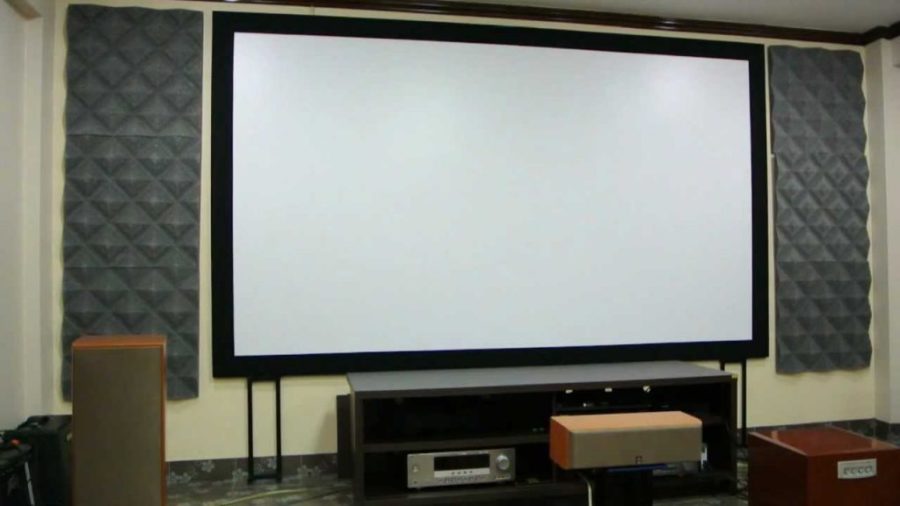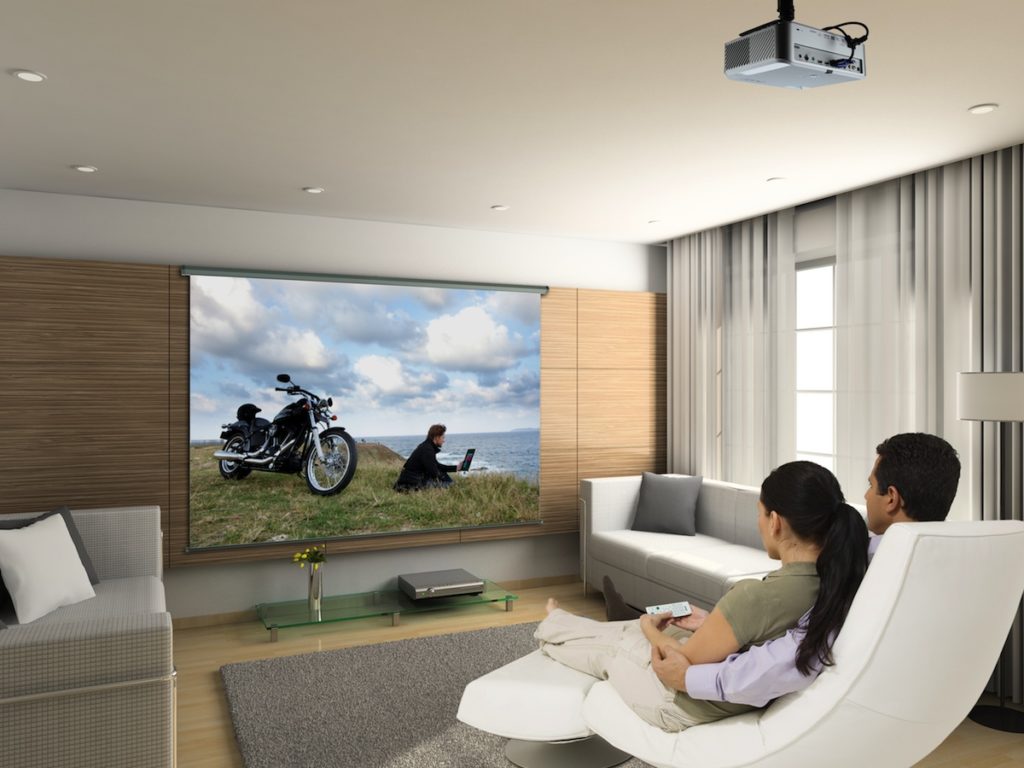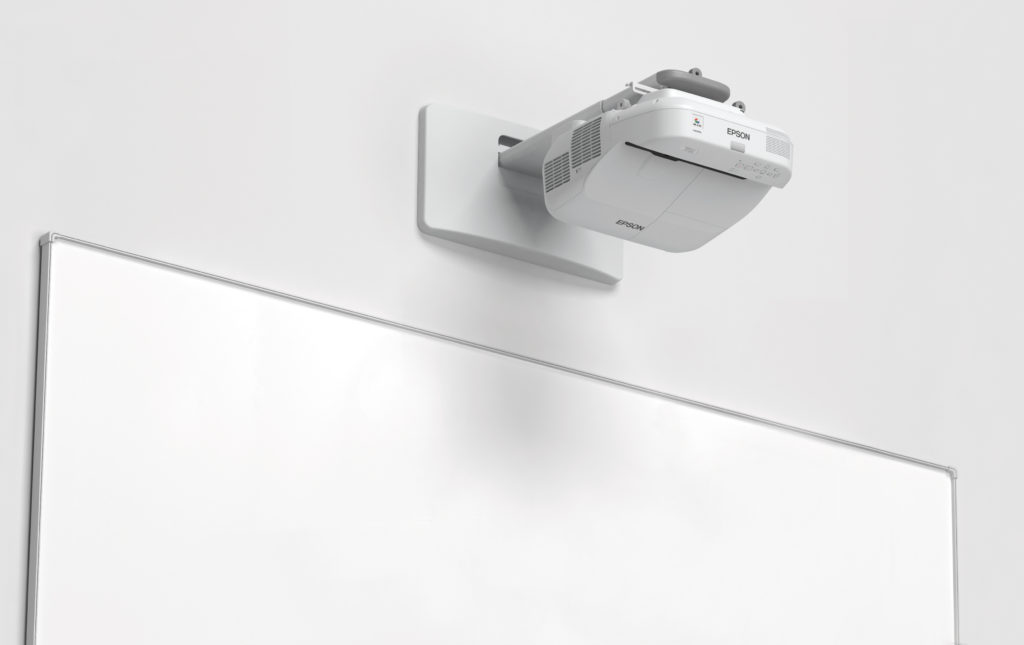The purchase of a projector is usually accompanied by the purchase of a special canvas. Only the best projector screens can guarantee first-class image quality. Currently, these designs have become an integral part of home theaters, training events, seminars, various presentations. Before proceeding with the selection of the most optimal option, it is important to understand the types, features, the most significant parameters of this equipment.

Content
Key selection criteria
The time has come when viewing your favorite movie on the big screen can be organized without leaving your own apartment. A modern projector does not take up much space, allows you to independently control the session, stopping it if necessary. Today, this technique is an indispensable tool for all kinds of presentations, trainings, and seminars. Is it important to purchase a screen or is it enough to use an ordinary white wall? Experts say that no smooth wall can provide uniformity, good contrast, brightness and naturalness of the image.
The projection screen performs two main tasks: firstly, it reproduces the image, and without loss of quality, and secondly, thanks to a kind of reflective coating, it distributes projection light towards the audience. If you are not aware of which screen to choose for the projector, we recommend starting with an assessment of the illumination of the room, the location of the projector itself, the placement and the number of viewers participating in viewing.
So, how to choose a suitable cloth, where to start, what to start with when buying?
Installation
First, it is worth determining whether the screen will be installed in one room, or if you need a mobile option. Depending on the installation method, such designs are divided into stationary and mobile.
Stationary mounted in one place. Such a device is designed for continuous use, does not involve movement.
There are two types of stationary paintings:
- tension;
- rolled.
The first option is a completely flat canvas attached to a special frame with buttons or a grommet. Such a screen is difficult to carry any distance. Although it looks somewhat bulky, it guarantees first-class picture quality. Usually, tension models are installed in large rooms, where, being an integral part of a home theater, they become a central element of the interior.
Roll-ups are deployed from a roll, attached to a wall or ceiling. They are more compact, most often used in small rooms (offices, classrooms, classrooms, etc.).

Rolled are manual and motorized. In order to avoid problems with folding and unfolding, the mechanical (manual) webs are most correctly mounted so that they are within reach of the hands. Due to the equipped switch or remote control, the location of the motorized screens does not depend on the location of the person. Such canvases are very convenient in operation, and electric motors work almost silently.
Separately, it is worth highlighting the built-in, ceiling-mounted screen. As a rule, such models in minimized form are almost invisible; for ease of use, they are equipped with motors and are controlled by remote controls.
Mobile equipped with special tripods for installation and a tube into which the canvas is folded. The convenience of this design in the possibility of unimpeded movement from one place to another.The portable version is a good helper in conducting presentations, seminars, lectures, and exhibitions. A slight minus: less stability, takes up space in the room.
Portable screens are presented:
- floor or desktop option;
- a design on two legs (it is stable, does not distort the picture, you can adjust the height of the legs if necessary, quickly assembled into a case);
- device on a tripod (so that the stability does not decrease, the width of the web should not exceed 2.5 m).
Projection focus
Screens are designed for any of three types of projection:
- frontal (the most popular, the projector is installed in front of the canvas);
- reverse (used in spacious rooms, the projector is placed behind the screen, has excellent contrast, good brightness);
- direct (equipment may be located behind and in front of the projection screen).
Viewing angle, gain
This indicator affects the viewing comfort, and its value in different models varies from 45 to 180 degrees. For example, for a small group of people, an angle of 50 degrees is enough, an angle of over 100 degrees guarantees the most comfortable viewing for a large number of viewers.

The gain in illuminated rooms should be more than one, for darkened rooms - less than one, home cinema - should not exceed 1.5. With an increase in this indicator, the magnitude of the viewing angle usually decreases.
Shape and material
Projection screens come in standard shapes and curved. The second option, focusing the light at one point, guarantees a deeper immersion in the events taking place on the screen.
As a raw material for the manufacture of paintings, textiles or vinyl are most often used. Textile screens are usually used for educational purposes, presentations, exhibitions. They have good tension, a completely flat surface, are considered more resistant to wear, are inexpensive. Vinyl canvases are classified as elite. Such designs provide first-class image quality, are much more expensive than textile. The stretch is carried out using a special system.
Coating
The surface is:
- matte (white or gray, evenly scatters light, provides a high-quality image from different places, is inexpensive);
- glossy (costs more than the previous version, guarantees first-class contrast, good clarity, high brightness of the picture, has limited viewing angles, requires complete darkness in the room). It is also worth noting that glossy coatings are reverse and mirror reflection;
- diffuse reflective (used for back projection).
Size and format
This parameter is perhaps the most important, as it determines the compatibility of the canvas with the projector. Diagonal measured in inches, varies between models from 60 to 250 inches. Naturally, the greater the distance between the audience and the screen, the larger the canvas should be. Convenience of transportation is an important point to consider when buying a mobile screen.
The aspect ratio of 3: 4 is most often used in offices, the best option for home theaters is the 16: 9 format. Today, there are also expensive multi-format models that have the ability to change the aspect ratio through special curtains. The most optimal option is a roll screen, which allows you to independently set the desired height.
Advice for home session lovers
Today, home theaters have ceased to be a luxury item, becoming an integral part of leisure. It is enough to purchase a powerful projector, a suitable projection screen, carry out installation in the room and enjoyment is guaranteed. From now on, you can view your favorite movies, music, entertainment and sports programs on the big screen, play computer games.
Usually an entire room is assigned to view various video files.If you purchased a device for projecting an image, it is important to choose the right screen for your home theater projector. Experts recommend purchasing stationary models fixed to a special frame. In order to avoid wrinkles on the surface, it is recommended to give preference to strong metal frames.
Folding projection canvases are also particularly popular. Such structures are attached to the ceiling or wall, control is carried out using a convenient remote control. So that after folding the canvas, the place is not empty, you can hang a picture behind it or put a shelf. It is best to choose a screen with a special black border around the white panel. Extradrop will cut off the flare, the picture will become more contrasty, and the edges of the frames are clear.
To achieve a comfortable viewing, installation of the structure is carried out in compliance with certain rules. The design must be installed so that the projector lens is perpendicular to it. There should not be any obstacles between the audience and the panel of the home theater. Fixation should be carried out so that the picture is displayed across the screen.
Now the best screens for projectors are produced by many manufacturers. The most famous are the Dutch company Projecta, the French Visio, the German Lumien and Classic Solution, the American Da-Lite, Draper and Stewart, the Canadian Goo Systems. Projection screens from different manufacturers use different equipment to determine the relative brightness coefficient. This nuance also needs to be considered when choosing.